
Nara: The Timeless Heart of Japan
Discover Nara: Japan's ancient capital, where history, nature, and culture converge in a serene and captivating environment.
Nara, an ancient city in Japan, is a haven for history buffs and nature lovers alike. Once the capital of Japan, Nara is filled with historical treasures, including some of the oldest and largest temples in the country. Nara Park, where deer roam freely, is a must-visit. The deer are considered sacred and have become a symbol of the city. A short walk from Nara Park is Todai-ji Temple, home to the Great Buddha statue, one of the largest bronze figures in the world. The temple complex is expansive and offers a peaceful retreat from the bustling city life. Another notable site is Kasuga Taisha Shrine, famous for its thousands of lanterns that light up during festivals. Nara is also known for its traditional Japanese gardens and tea houses. Isuien Garden, with its beautiful ponds and tea house, provides a glimpse into the serene beauty of Japanese landscaping. Don't miss the Naramachi district, where you can wander through narrow streets lined with traditional wooden houses, shops, and museums. It's the perfect place to enjoy local crafts and cuisine.
Local tips in Nara
- Visit Nara Park early in the morning to avoid crowds and have a more peaceful experience with the deer.
- Wear comfortable shoes as many attractions are best explored on foot.
- Try the local specialty, Kakinoha-zushi, sushi wrapped in persimmon leaves.
- Purchase a Nara City Pass for discounts on transport and entry to major attractions.
- Respect the local customs, especially in temples and shrines. Removing shoes and being quiet are often required.
Nara: The Timeless Heart of Japan
Nara, an ancient city in Japan, is a haven for history buffs and nature lovers alike. Once the capital of Japan, Nara is filled with historical treasures, including some of the oldest and largest temples in the country. Nara Park, where deer roam freely, is a must-visit. The deer are considered sacred and have become a symbol of the city. A short walk from Nara Park is Todai-ji Temple, home to the Great Buddha statue, one of the largest bronze figures in the world. The temple complex is expansive and offers a peaceful retreat from the bustling city life. Another notable site is Kasuga Taisha Shrine, famous for its thousands of lanterns that light up during festivals. Nara is also known for its traditional Japanese gardens and tea houses. Isuien Garden, with its beautiful ponds and tea house, provides a glimpse into the serene beauty of Japanese landscaping. Don't miss the Naramachi district, where you can wander through narrow streets lined with traditional wooden houses, shops, and museums. It's the perfect place to enjoy local crafts and cuisine.
When is the best time to go to Nara?
Iconic landmarks you can’t miss
Nara Park
Explore Nara Park: A serene blend of nature and history, home to free-roaming deer and iconic Japanese temples in the heart of Nara.
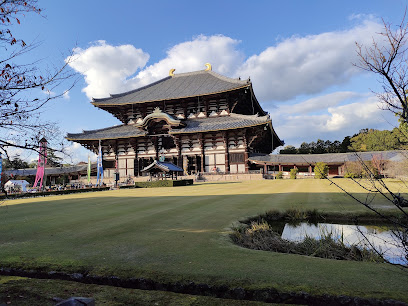
Tōdai-ji
Discover the majestic Tōdai-ji, a UNESCO World Heritage Site in Nara, home to the Great Buddha and remarkable traditional Japanese architecture.

Kasuga Taisha
Experience the serene beauty and rich history of Kasuga Taisha, a prominent Shinto shrine in Nara, surrounded by nature and ancient traditions.

Kofuku-ji
Discover Kofuku-ji, an ancient Buddhist temple in Nara, Japan, renowned for its stunning architecture and deep cultural significance.

Horyu-ji
Discover the timeless beauty of Horyu-ji, a UNESCO World Heritage Site, showcasing ancient wooden architecture and rich Buddhist history in Nara, Japan.
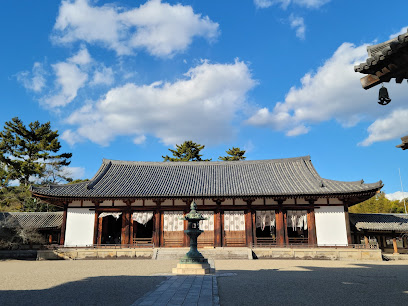
Heijō Palace Site Historical Park
Explore the Heijō Palace Site Historical Park in Nara, Japan—where history, culture, and nature intertwine in a serene setting.

Toshodai-ji
Explore Toshodai-ji, a historic Buddhist temple in Nara, Japan, renowned for its stunning architecture and tranquil gardens, perfect for reflection.

Nara National Museum
Discover the rich cultural heritage of Japan at the Nara National Museum, home to exquisite art collections and historical artifacts in a serene setting.
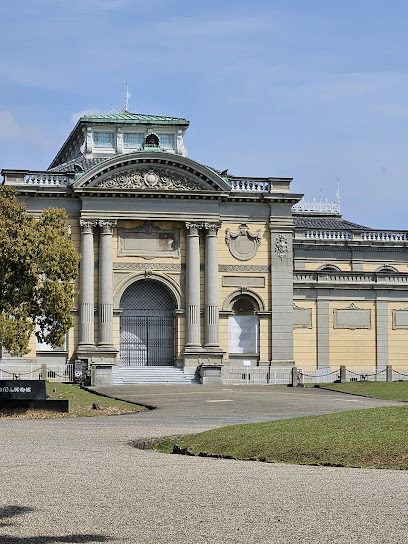
Todaiji Nandaimon (Great South Gate)
Explore the majestic Todaiji Nandaimon in Nara, a UNESCO World Heritage site showcasing stunning traditional architecture and rich cultural heritage.
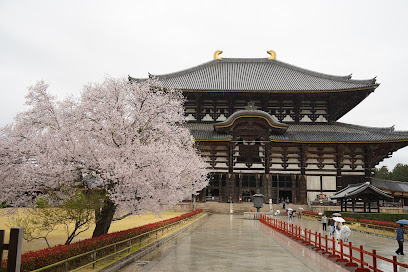
Todaiji Nigatsudo (February Hall)
Explore the tranquil beauty and cultural richness of Todaiji Nigatsudo, a historic Buddhist temple in Nara, Japan, surrounded by stunning landscapes.

Todai-ji Daibutsuden (Great Buddha Hall)
Visit Todai-ji Daibutsuden, a stunning UNESCO World Heritage Site in Nara, Japan, home to the Great Buddha and remarkable cultural history.

Gango-ji
Explore Gango-ji, a UNESCO World Heritage Buddhist temple in Nara, where history, spirituality, and tranquility converge in stunning landscapes.

NARA KINGYO MUSEUM
Explore the captivating world of goldfish and artistic beauty at Nara Kingyo Museum, where aquatic wonders meet cultural elegance.
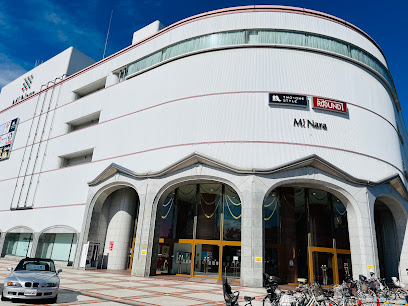
Genkishin (Nara)
Discover Genkishin in Nara: A culinary gem serving authentic ramen with rich flavors and a cozy atmosphere perfect for foodie travelers.
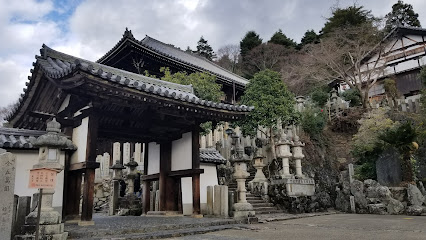
Ukimido
Discover the tranquil beauty of Ukimido, a serene pavilion surrounded by nature in the heart of Nara, Japan.

Unmissable attractions to see
Universal Studios Japan
Discover adventure and excitement at Universal Studios Japan, where blockbuster movies come to life in an unforgettable theme park experience.

Fushimi Inari Taisha
Explore the breathtaking Fushimi Inari Taisha, Kyoto's iconic shrine adorned with thousands of vibrant torii gates, a must-visit for cultural enthusiasts.
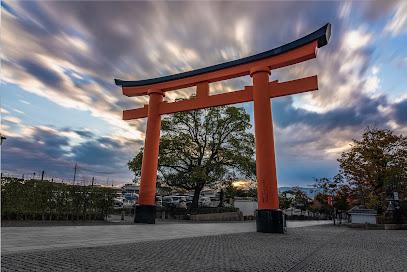
Osaka Castle
Explore the historic Osaka Castle, a majestic fortress surrounded by beautiful gardens and rich in Japan's fascinating history.

Nara Park
Discover the enchanting beauty and rich history of Nara Park, where nature meets tradition in the heart of Japan.
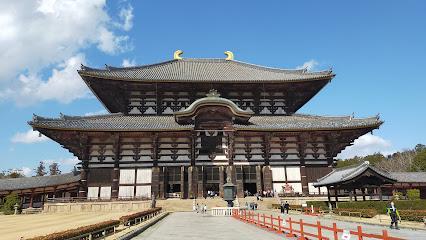
Kiyomizu-dera
Discover the spiritual heart of Kyoto at Kiyomizu-dera, a breathtaking Buddhist temple offering stunning views and rich history.

ABENO HARUKAS
Experience breathtaking views and cultural richness at Abeno Harukas, Japan's tallest skyscraper in the heart of Osaka.

Osaka Aquarium Kaiyukan
Explore the depths of the ocean at Osaka Aquarium Kaiyukan, a captivating tourist attraction showcasing diverse marine life and eco-conservation.

Osaka Castle Park
Experience the enchanting beauty and rich history of Osaka Castle Park, a serene escape in the heart of Osaka, Japan.
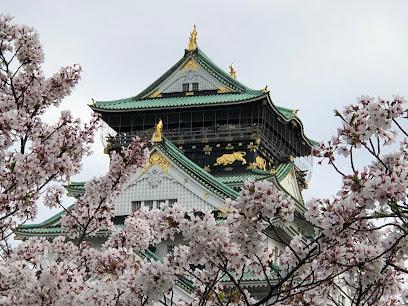
Nishiki Market
Discover the culinary treasures of Nishiki Market, Kyoto's vibrant marketplace filled with local delicacies and unique souvenirs.
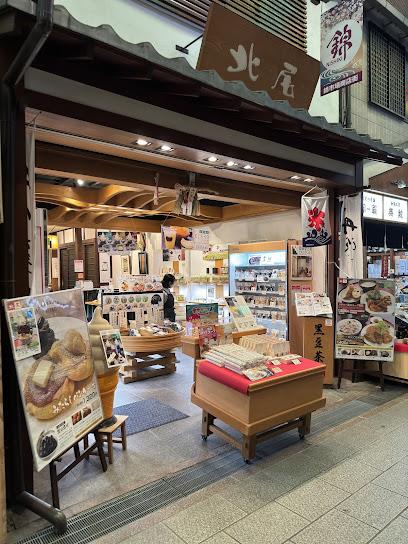
Nijō Castle
Explore the majestic Nijō Castle, a UNESCO World Heritage site in Kyoto, rich in history and stunning architecture, surrounded by serene gardens.

Umeda Sky Building
Discover breathtaking views and modern architecture at the Umeda Sky Building, a must-visit landmark in Osaka offering a one-of-a-kind experience.
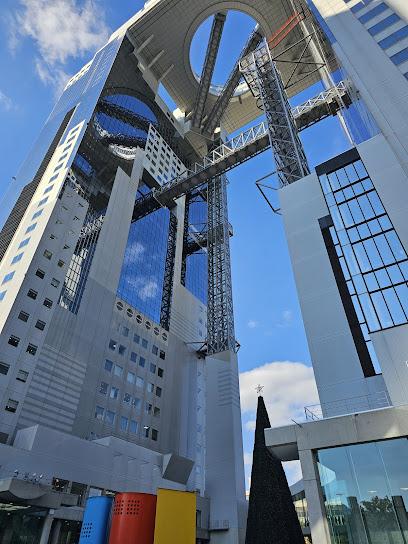
Tsūtenkaku
Discover the breathtaking views and vibrant culture of Osaka from Tsūtenkaku, an iconic observation tower rich in history and charm.

Yasaka Shrine
Explore Yasaka Shrine, a spiritual landmark in Kyoto known for its stunning architecture, lush gardens, and vibrant festivals, a true gem of Japanese culture.

Tōdai-ji
Discover the grandeur of Tōdai-ji, a UNESCO World Heritage site and home to Japan's Great Buddha, in the heart of Nara's historical landscape.

Byodoin
Discover Byodoin Temple in Uji, Kyoto—a UNESCO World Heritage site showcasing stunning architecture and rich Japanese cultural heritage.
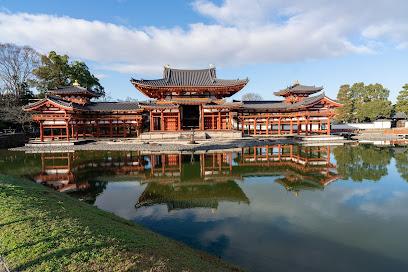
Essential places to dine
Tonkatsu Ganko Nara
Discover the rich flavors of Japan at Tonkatsu Ganko Nara, where delicious tonkatsu awaits every visitor.
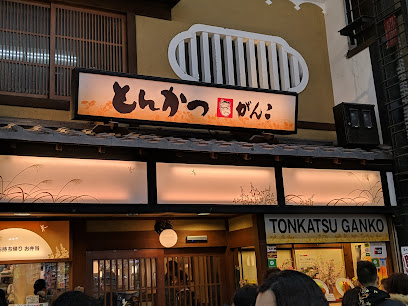
Kamameshi Shizuka Kouen-ten志津香
Discover the flavors of Japan at Kamameshi Shizuka Kouen-ten—where tradition meets taste in every bite.
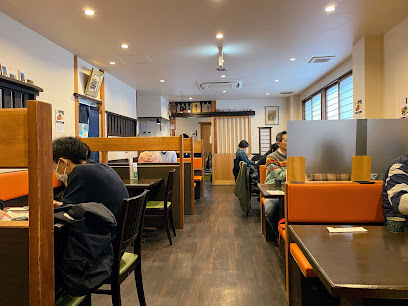
Kokkyo Shokudo
Discover Kokkyo Shokudo in Nara – where authentic Japanese cuisine meets warm hospitality in a charming setting.
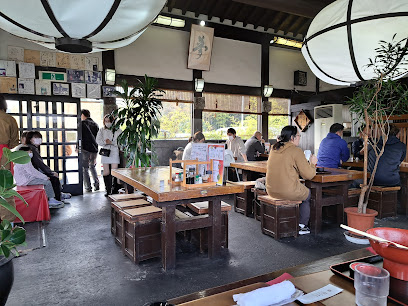
Maguro Koya
Discover the flavors of Japan at Maguro Koya in Nara - where fresh seafood meets authentic culinary tradition.

Wakakusa Curry
Discover authentic Japanese curry at Wakakusa Curry in Nara - a culinary delight blending tradition with modern tastes.

Kamaiki
Discover the authentic flavors of udon noodles at Kamaiki in Nara, where tradition meets culinary excellence.

Mizuya Chaya
Experience authentic Japanese flavors at Mizuya Chaya, where traditional cuisine meets serene ambiance in beautiful Nara.
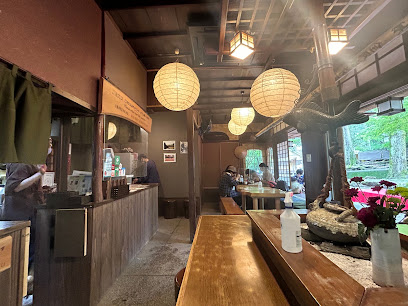
Kameya
Experience authentic Okonomiyaki at Kameya in Nara – where traditional flavors meet modern hospitality.
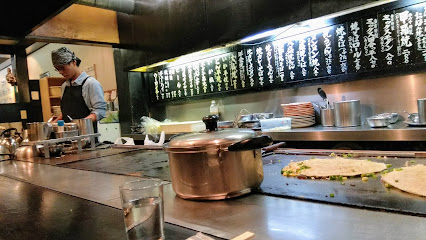
Edogawa - Naramachi
Experience authentic Japanese cuisine at Edogawa - Naramachi in Nara, specializing in unagi and traditional dishes amidst charming surroundings.
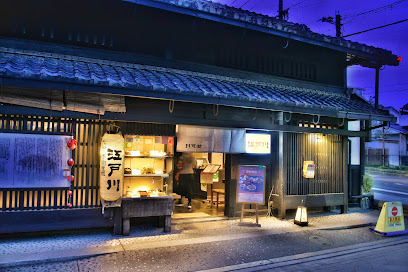
Izasa-Nakatani-hompo Yumekaze-hiroba
Discover Izasa-Nakatani-hompo Yumekaze-hiroba in Nara for an unforgettable sushi experience blending tradition with modern flavors.
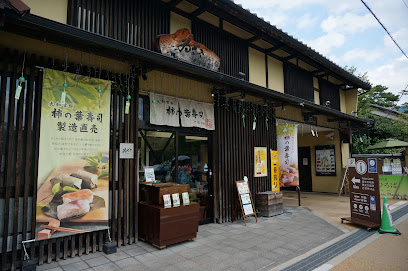
Surugamachi's Okonomiyakiya
Experience authentic okonomiyaki at Surugamachi's Okonomiyakiya in Nara – where tradition meets flavor at affordable prices.
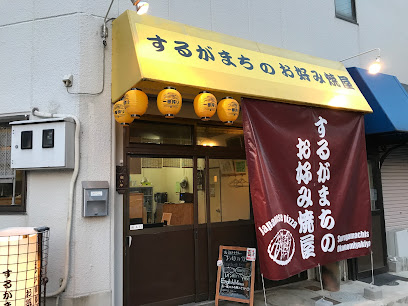
Kakinohasushi Hompo Tanaka
Discover authentic kakinohasushi at Kakinohasushi Hompo Tanaka in Nara - where tradition meets flavor.

Yamatoan Honten
Experience authentic Japanese dining at Yamatoan Honten in Nara - home to exquisite kaiseki meals and fresh local seafood.
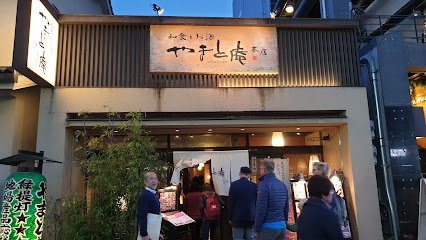
China Dining Hiten
Experience authentic Mandarin flavors at China Dining Hiten in Nara – where tradition meets taste in every dish.
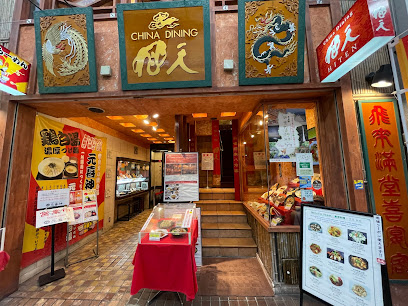
Awa Naramachi
Experience authentic Japanese cuisine at Awa Naramachi in Nara - where tradition meets taste.
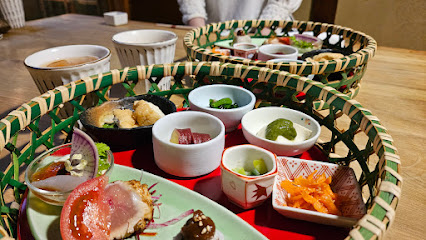
Markets, malls and hidden boutiques
Nara Family
Explore Nara Family, a lively shopping mall in Nara, Japan, offering diverse shops, dining, and family-friendly entertainment for an unforgettable experience.

Mi Nara
Discover the lively Mi Nara shopping mall in Nara, Japan, where shopping, dining, and entertainment come together in a vibrant experience.

Kintetsu Department Store Nara
Explore Kintetsu Department Store Nara for an exceptional shopping experience featuring local crafts, fashion, and delightful dining options in the heart of Nara.

Higashimuki Shopping Street
Explore the vibrant Higashimuki Shopping Street in Nara, Japan, where unique shops and delicious local delicacies await every traveler.
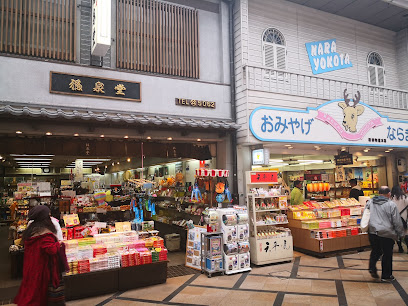
TSUTAYA BOOKS Nara Store
Explore the stylish TSUTAYA BOOKS Nara Store, where literature meets local culture in a cozy café setting.

CHAMI - Specialty Coffee Roaster - Nara, JAPAN
Experience the art of specialty coffee at CHAMI in Nara, Japan – where every cup tells a story of flavor and craftsmanship.

Mochiido Center Town
Experience the vibrant shopping culture of Nara at Mochiido Center Town, where modern retail meets traditional Japanese charm.
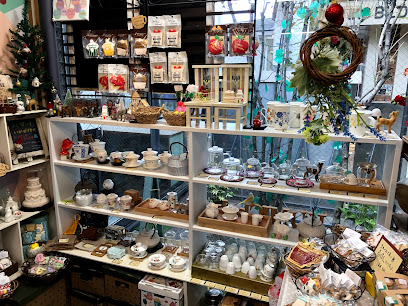
Nakagawa Masashichi Shoten - Nara Flagship Store
Discover unique handicrafts, clothing, and local treasures at Nakagawa Masashichi Shoten, Nara's charming flagship general store.
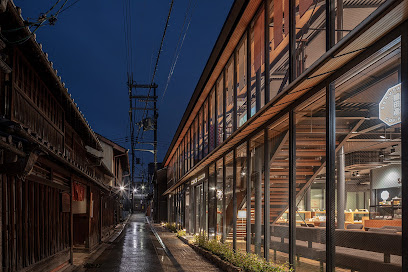
Yumekaze Plaza
Explore Yumekaze Plaza in Nara: A vibrant shopping mall blending local culture with modern shopping experiences.
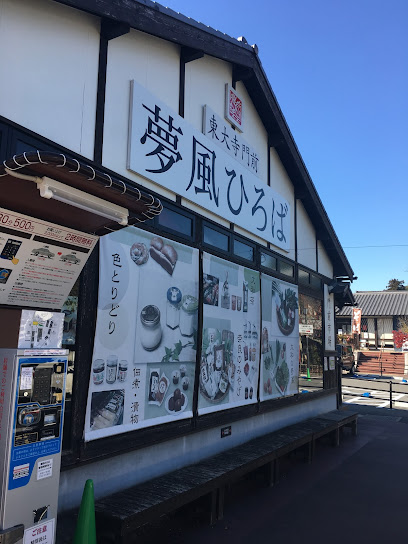
Silkia Nara
Discover Silkia Nara, a vibrant shopping mall in Nara, Japan, offering diverse shopping, dining, and cultural experiences for every traveler.
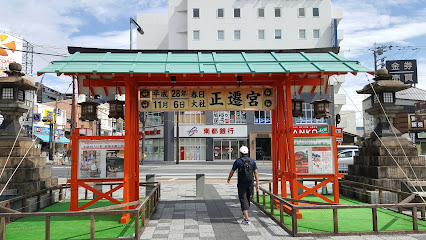
Sanjo Dori Shopping Mall
Discover the vibrant Sanjo Dori Shopping Mall in Nara, blending shopping, dining, and culture for an unforgettable experience.
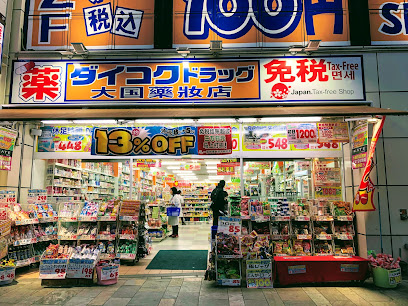
Vierra Nara
Discover a shopping paradise at Vierra Nara, where modern retail meets traditional Japanese culture in the heart of Nara.
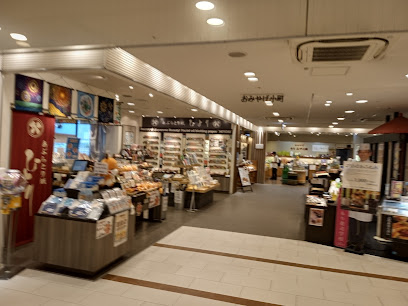
Konishi Sakura-dori Shopping Street
Discover the vibrant shopping experience at Konishi Sakura-dori, where tradition meets modernity in the heart of Nara.

Museum Shop, Nara National Museum
Explore the Museum Shop at Nara National Museum for unique souvenirs that capture the essence of Japan's cultural heritage.
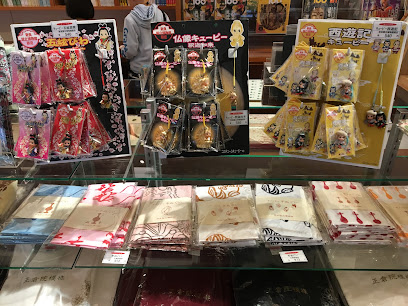
2nd Street Nara Hokkejicho
Explore the charm of second-hand shopping at 2nd Street Nara Hokkejicho, where unique treasures await every eco-conscious traveler.

Essential bars & hidden hideouts
LAMP BAR
Discover the vibrant nightlife at LAMP BAR in Nara, where personalized cocktails and a cozy atmosphere create unforgettable experiences for tourists.

Savant
Experience Nara's vibrant nightlife at Savant, where exquisite drinks meet a cozy atmosphere, perfect for unwinding after a day of exploration.
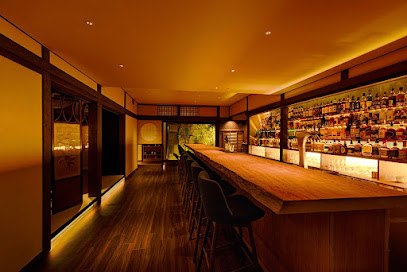
Light
Discover the lively ambiance of Light Pub in Nara, where local brews meet warm hospitality and vibrant nightlife.

shisha&bar vanguard
Discover the vibrant nightlife of Nara at Vanguard Shisha & Bar, where exquisite shisha and cocktails meet a lively atmosphere.
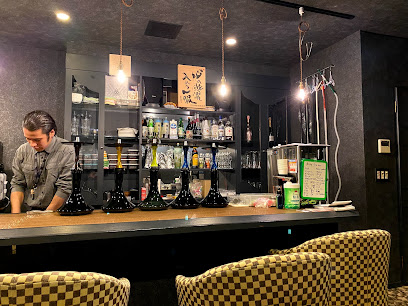
Bar 'Pippin
Discover Nara's vibrant nightlife at Bar Pippin, where cozy ambiance meets an exquisite drink selection in the heart of the city.

バー フィディック
Experience the vibrant nightlife of Nara at Bar Fiddich, where exceptional drinks and a cozy atmosphere await you.
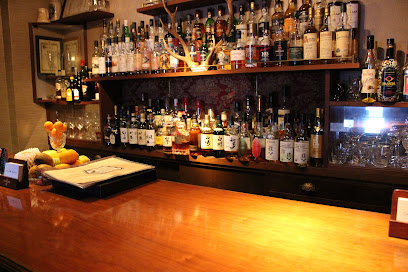
Amberjack
Experience Nara's vibrant nightlife at Amberjack, a stylish bar offering exquisite drinks and a friendly atmosphere for every traveler.

Old Time
Experience the perfect blend of tradition and modernity at Old Time, a cozy bar in Nara offering a delightful selection of beverages.

ダルウィニー
Discover the delightful ダルウィニー bar in Nara, where local flavors meet international charm in a cozy atmosphere perfect for relaxation.

Music Bar Reciaffe
Discover the vibrant nightlife of Nara at Music Bar Reciaffe, where great music and a lively atmosphere await your arrival.
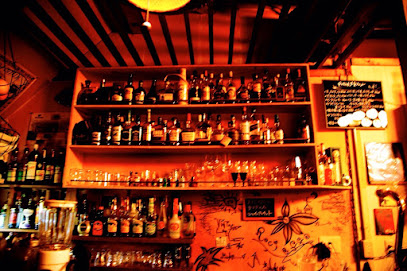
Woo Koo Bar?
Discover Nara's nightlife at Woo Koo Bar, where vibrant cocktails and lively music create the perfect evening atmosphere.

BARスターライト 日本一のバーテンダーのお店
Experience cocktail artistry at BARスターライト, Nara's premier cocktail bar, where renowned bartenders craft unforgettable drinks.
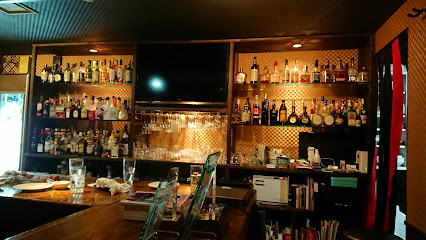
3 LIONS England Sports Bar
Experience the excitement of British sports culture at 3 LIONS England Sports Bar in Nara, offering great drinks, delicious snacks, and live game screenings.

bar RISE
Discover the vibrant nightlife at Bar RISE in Nara - a must-visit bar offering a unique blend of drinks and a lively atmosphere.

M's Bar
Discover M's Bar in Nara for an unforgettable evening of crafted cocktails and cozy ambiance amidst Japan's rich cultural heritage.

Travel experiences inspired by this city
Explore more travel diariesLocal Phrases
-
- Helloこんにちは
[kon-ni-chi-wa] - Goodbyeさようなら
[sa-yo-u-na-ra] - Yesはい
[ha-i] - Noいいえ
[i-i-e] - Please/You're welcomeどうぞ
[do-u-zo] - Thank youありがとうございます
[a-ri-ga-to-u-go-za-i-ma-su] - Excuse me/Sorryすみません
[su-mi-ma-se-n] - How are you?お元気ですか?
[o-ge-n-ki-de-su-ka] - Fine. And you?元気です。あなたは?
[ge-n-ki-de-su.a-na-ta-wa] - Do you speak English?英語を話せますか?
[e-i-go-o-ha-na-se-ma-su-ka] - I don't understandわかりません
[wa-ka-ri-ma-se-n]
- Helloこんにちは
-
- I'd like to see the menu, pleaseメニューを見せてください
[me-n-yu-u-o-mi-se-te-ku-da-sa-i] - I don't eat meat肉は食べません
[ni-ku-wa-ta-be-ma-se-n] - Cheers!乾杯!
[ka-n-pai] - I would like to pay, pleaseお会計をお願いします
[o-kai-kei-o-o-ne-ga-i-shi-ma-su]
- I'd like to see the menu, pleaseメニューを見せてください
-
- Help!助けて!
[ta-su-ke-te] - Go away!行って!
[i-t-te] - Call the Police!警察を呼んで!
[ke-i-sa-t-o-yo-n-de] - Call a doctor!医者を呼んで!
[i-sha-o-yo-n-de] - I'm lost道に迷っています
[mi-chi-ni-ma-ya-t-te-i-ma-su] - I'm ill具合が悪いです
[gu-a-i-ga-wa-ru-i-de-su]
- Help!助けて!
-
- I'd like to buy......を買いたいです
[o-ka-i-ta-i-de-su] - I'm just looking見てるだけです
[mi-te-ru-da-ke-de-su] - How much is it?いくらですか?
[i-ku-ra-de-su-ka] - That's too expensiveそれは高すぎます
[so-re-wa-ta-ka-su-gi-ma-su] - Can you lower the price?値段を下げられますか?
[ne-da-n-o-sa-ge-ra-re-ma-su-ka]
- I'd like to buy......を買いたいです
-
- What time is it?今何時ですか?
[i-ma-na-n-ji-de-su-ka] - It's one o'clock1時です
[i-chi-ji-de-su] - Half past (10)10時半過ぎ
[ju-u-ji-ha-n-su-gi] - Morning朝
[a-sa] - Afternoon午後
[go-go] - Evening夕方
[yu-u-ga-ta] - Yesterday昨日
[ki-no-u] - Today今日
[kyo-u] - Tomorrow明日
[a-shi-ta] - 1一
[i-chi] - 2二
[ni] - 3三
[sa-n] - 4四
[shi] - 5五
[go] - 6六
[ro-ku] - 7七
[na-na] - 8八
[ha-chi] - 9九
[kyu-u] - 10十
[ju-u]
- What time is it?今何時ですか?
-
- Where's a/the...?...はどこですか?
[...wa-do-ko-de-su-ka] - What's the address?住所は何ですか?
[ju-u-sho-wa-na-n-de-su-ka] - Can you show me (on the map)?地図で見せてくれますか?
[chi-zu-de-mi-se-te-ku-re-ma-su-ka] - When's the next (bus)?次の(バス)はいつですか?
[tsu-gi-no-(ba-su)-wa-i-tsu-de-su-ka] - A ticket (to ....)切符(...へ)
[ki-ppu(...e)]
- Where's a/the...?...はどこですか?
History of Nara
-
In 710 AD, Nara, then known as Heijō-kyō, was established as the first permanent capital of Japan. This marked the beginning of the Nara period, a time of significant cultural and political development in Japanese history. The city was meticulously planned and modeled after the Tang Dynasty capital of Chang'an, exemplifying the influence of Chinese culture on Japan.
-
Tōdai-ji, one of Japan's most famous and historically significant temples, was constructed in Nara in 752 AD. The temple is home to the Great Buddha (Daibutsu), one of the largest bronze statues of Buddha Vairocana in the world. The construction of Tōdai-ji played a crucial role in consolidating Buddhism as a state religion in Japan, under the auspices of Emperor Shōmu.
-
The Nara Period, spanning from 710 to 794 AD, was a time of significant cultural, artistic, and religious development in Japan. During this period, the city of Nara flourished as a center of Buddhist culture and the arts. The Kojiki and Nihon Shoki, Japan's oldest historical records, were compiled during this era, providing invaluable insights into Japan's ancient history and mythology.
-
During the Nara period, Japan experienced a profound influence from Chinese culture, especially from the Tang Dynasty. This influence is evident in the city's layout, architectural styles, and the adoption of the Chinese writing system. The city of Nara became a hub for the exchange of ideas, technology, and culture between Japan and other parts of Asia.
-
Kōfuku-ji, another prominent temple in Nara, was founded in 669 AD and became the family temple of the influential Fujiwara clan. The temple complex exemplifies the political power and cultural influence wielded by the Fujiwara family during the Nara period. Kōfuku-ji played a significant role in the political and religious life of the time.
-
The Shōsō-in, the treasure house of Tōdai-ji Temple, is an important repository of historical artifacts from the Nara period. Built in the 8th century, it houses a vast collection of items, including textiles, ceramics, and documents, which provide a unique glimpse into the cultural and economic life of the period. The Shōsō-in is renowned for its well-preserved artifacts, many of which were gifts from foreign dignitaries.
-
In 794 AD, the capital of Japan was moved from Nara to Heian-kyō (modern-day Kyoto) by Emperor Kanmu. This marked the end of the Nara period and the beginning of the Heian period. The relocation was motivated by political and strategic reasons, as well as the desire to escape the growing influence of powerful Buddhist temples in Nara. Despite the move, Nara remained an important cultural and religious center.
Nara Essentials
-
Nara is easily accessible from major cities in Japan. The nearest international airports are Kansai International Airport (KIX) and Osaka Itami Airport (ITM). From Kansai International Airport, you can take the JR Kansai Airport Rapid Service to Tennoji Station and then transfer to the JR Yamatoji Line to Nara Station, which takes about 1.5 hours. From Osaka Itami Airport, you can take a limousine bus to Nara, which takes approximately an hour. Alternatively, Nara is a 45-minute train ride from Kyoto via the JR Nara Line or Kintetsu Limited Express Line.
-
Nara has an efficient public transportation system. The JR and Kintetsu railways are the primary modes of transport for reaching Nara from other cities. Within Nara, local buses operated by Nara Kotsu connect major tourist sites. For more flexibility, consider renting a bicycle or using taxis, which are readily available but can be expensive. Walking is also a pleasant way to explore Nara, especially around Nara Park.
-
The official currency in Japan is the Japanese Yen (JPY). Credit cards are widely accepted in most hotels, restaurants, and shops in Nara, but it's advisable to carry some cash, particularly for smaller establishments and street vendors. ATMs are available at convenience stores and banks, but not all ATMs accept foreign cards, so look for international ATMs, such as those at 7-Eleven and Post Offices.
-
Nara is generally very safe for tourists. Petty crime is rare, but it's always wise to keep an eye on personal belongings, especially in crowded areas. There are no specific high-crime areas targeting tourists. Use common sense safety practices such as avoiding poorly lit areas at night and not leaving valuables unattended.
-
In case of an emergency, dial 110 for police assistance and 119 for fire and medical emergencies. Most emergency services have English-speaking operators. Nara has several hospitals with emergency rooms, including Nara Medical University Hospital. It's recommended to carry travel insurance that covers medical emergencies. For minor health issues, pharmacies are available throughout the city.
-
Fashion: Do dress modestly, especially when visiting religious sites. Avoid overly casual or revealing clothing. Religion: Do respect local customs. Bow slightly when entering temples and remove shoes when necessary. Public Transport: Do be respectful and give up your seat to elderly or disabled passengers. Don't speak loudly or make phone calls on public transport. Greetings: Do bow as a sign of respect when greeting locals. A slight bow is sufficient. Eating & Drinking: Do try local delicacies and be open to new experiences. Don't walk and eat simultaneously, as it is considered impolite. Always say 'Itadakimasu' before eating and 'Gochisousama' after finishing your meal.
-
To experience Nara like a local, visit the morning markets such as Nara Kotsu Center Market. Engage with locals who are often friendly and willing to share stories about their city. Take part in traditional tea ceremonies offered at various temples. Visit the less crowded temples like Toshodai-ji and Yakushi-ji for a more serene experience. For a unique activity, try making traditional Nara-style calligraphy or pottery.
Trending Landmark in Nara
Nearby Cities to Nara
-
Things To Do in Osaka
-
Things To Do in Kyoto
-
Things To Do in Nagoya
-
Things To Do in Kanazawa
-
Things To Do in Hiroshima
-
Things To Do in Tokyo
-
Things To Do in Fukuoka
-
Things To Do in Ulsan
-
Things To Do in Pohang
-
Things To Do in Gyeongju
-
Things To Do in Busan
-
Things To Do in Andong
-
Things To Do in Daegu
-
Things To Do in Suncheon
-
Things To Do in Daejeon

























